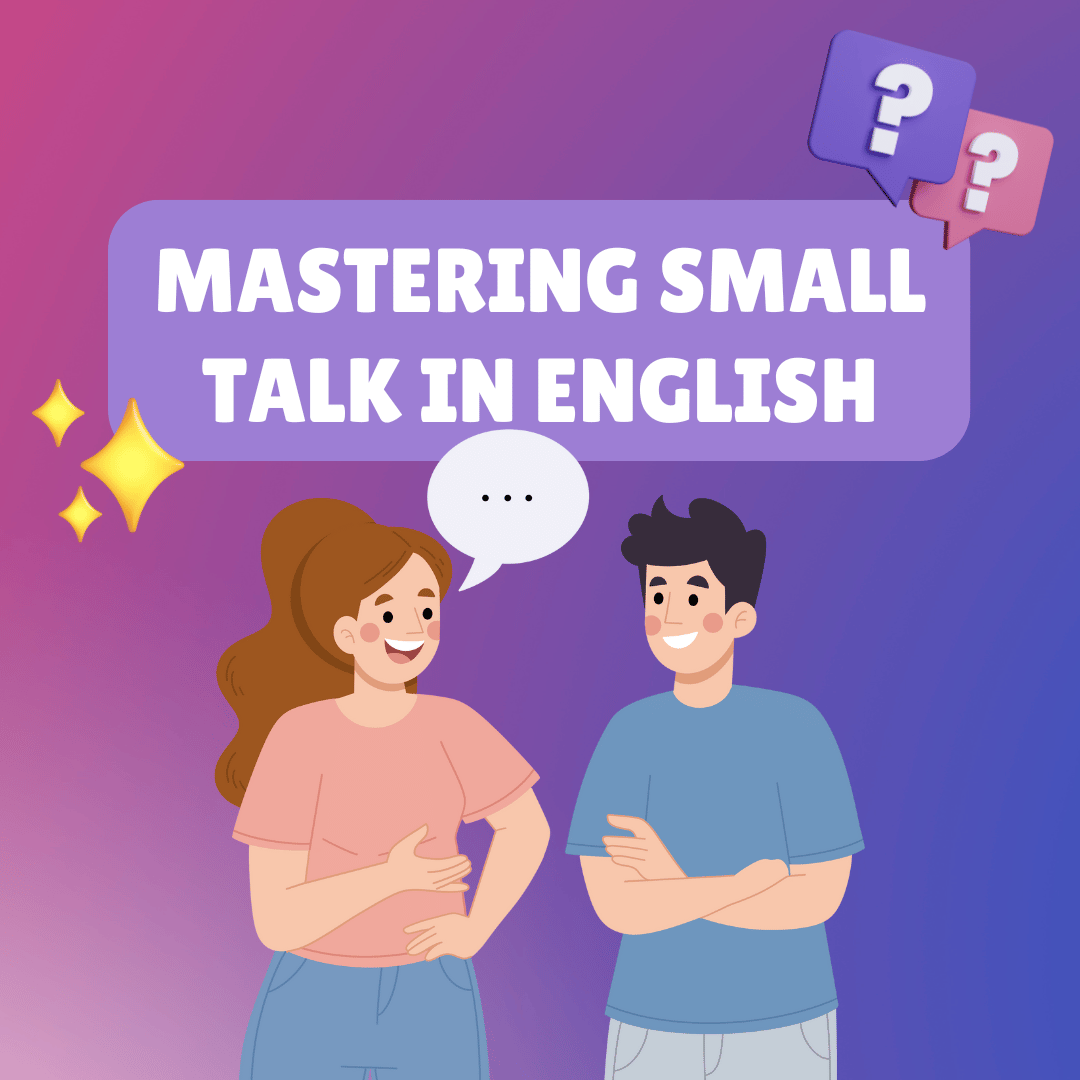Small talk is a vital social skill that helps you connect with others in various situations, from casual encounters to professional networking events. For English learners, mastering small talk can be particularly challenging, as it requires not only language proficiency but also an understanding of cultural norms and conversational cues. This guide will provide you with practical tips, examples, and phrases to help you initiate and sustain engaging conversations in English.

1. Understanding the Importance of Small Talk
Small talk serves as a social lubricant, easing the tension in new or awkward situations. It's a way to break the ice, establish rapport, and find common ground with others. While the topics of small talk may seem trivial, the ability to engage in these conversations can open doors to deeper relationships and opportunities.
2. Common Small Talk Topics
Choosing the right topic is key to starting a successful small talk. Here are some go-to topics that are safe and widely used:
- Weather: “Lovely weather we’re having, isn’t it?”
- Current Events: “Did you catch the news about...?”
- Work or School: “How’s your work going?”
- Hobbies and Interests: “What do you like to do in your free time?”
- Travel: “Have you been on any trips recently?”
These topics are easy to discuss and don’t require deep knowledge, making them ideal for casual conversation.
Read our other articles:
Learning English Through Popular TV Shows and Movies
3. Starting the Conversation
Initiating a conversation can be intimidating, but it’s often as simple as making a friendly observation or asking a question. Here are some phrases to help you get started:
- “Hi, I’m [Your Name]. How’s your day going?”
- “I couldn’t help but notice you were reading [Book Title]. How are you finding it?”
- “This event is great, isn’t it? Have you attended before?”
By showing interest in the other person, you invite them to share more, which can naturally lead to a longer conversation.
4. Keeping the Conversation Going
Once the conversation has started, it’s important to keep it flowing smoothly. Here’s how you can do that:
- Ask Open-Ended Questions: Instead of asking yes/no questions, ask questions that encourage the other person to elaborate. For example, “What do you think about…?” or “How did you get into that?”
- Active Listening: Show that you’re engaged by nodding, smiling, and providing verbal cues like “I see” or “That’s interesting.”
- Share Something About Yourself: After the other person has shared, it’s often a good idea to reciprocate with a related story or opinion.
5. Handling Awkward Silences
Awkward silences are a natural part of conversation, but they can be uncomfortable. If you sense a lull, try these strategies:
- Change the Topic: If the current topic has run its course, smoothly transition to a new one. For example, “Speaking of [related topic]…”
- Comment on the Environment: Make an observation about your surroundings. “This place has such a nice atmosphere, don’t you think?”
- Ask a Follow-Up Question: If the conversation is slowing down, dig deeper into something they mentioned earlier. “You mentioned you like hiking. What’s your favorite trail?”
6. Ending the Conversation Politely
Knowing how to gracefully exit a conversation is just as important as starting one. Here are a few polite ways to wrap things up:
- “It was great chatting with you. I’m going to grab a drink, but let’s catch up again soon.”
- “I’ve really enjoyed our conversation. I hope you have a wonderful rest of your day.”
- “I need to head out, but it was lovely meeting you.”
Ending on a positive note leaves a good impression and opens the door for future interactions.
Conclusion
Mastering small talk in English is a valuable skill that can enhance your social and professional life. By practicing these tips and phrases, you’ll become more confident in your ability to start and maintain engaging conversations. Remember, the more you practice, the easier it will become, and soon enough, small talk will feel like second nature.
Download Bookvo Now!










